At Strange Guitarworks, our heart has always been deeply rooted in serving the vibrant New Orleans music community. As musicians ourselves, we understand the crucial role a well-maintained instrument plays in the creative process. We’ve dedicated ourselves to nurturing the local music scene, building strong relationships with musicians, and ensuring their gear is always ready for the stage or studio. This commitment persisted even through the global pandemic, supporting artists as they adapted to home studios and livestreams.
However, as our reputation for quality work spread, we began receiving more inquiries from outside our local area. Musicians from across the country started reaching out, interested in shipping their beloved instruments to us for repair and restoration. One particular email stood out – an inquiry about restoring a vintage Gibson Dove Guitar owned by none other than Mike Campbell of Tom Petty & The Heartbreakers. The question arose: “Does even he not have a trusted local shop for his prized guitars?”
This realization prompted us to reconsider our previous hesitation about taking on shipped instruments. We understood that if musicians valued our expertise and dedication, we should extend our services beyond our local community. So, we opened our doors to musicians nationwide. This story is about the meticulous restoration of an exceptional guitar for a legendary musician, but it also underscores our philosophy: every instrument, regardless of its owner or stage played, receives the same level of care and respect at Strange Guitarworks. With that said, let’s delve into the revival of this gem – a 1968 Gibson Dove guitar.
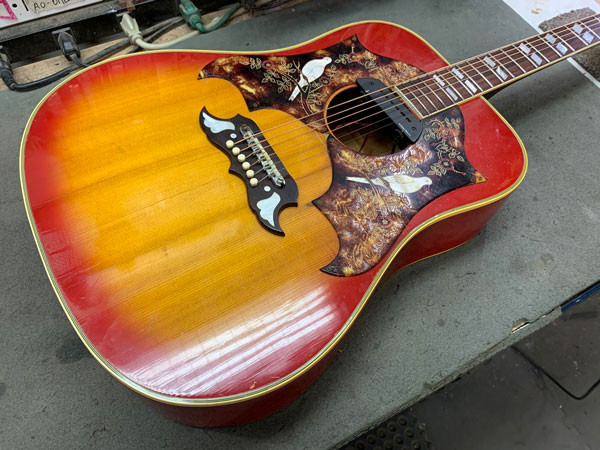 1968 Gibson Dove complete with hand-inlaid pearl doves
1968 Gibson Dove complete with hand-inlaid pearl doves
A Rare Vintage Gibson Dove Arrives for Restoration
This particular Gibson Dove guitar was truly a rare find. A cherry sunburst dreadnought acoustic guitar, it was crafted in 1968, a pivotal year for Gibson. The company was on the verge of the Norlin era, which would bring about shifts towards more automated production and less handcrafted precision. This period saw transitions in guitar construction, including moving away from Brazilian rosewood to ebony fingerboards, adopting heavier bracing patterns, and phasing out the exquisite hand-inlaid pearl doves that give this model its iconic name.
What made this Gibson Dove even more exceptional was its double pickguard – a feature exceptionally rare on vintage models and highly sought after by collectors and players alike. Despite its rarity and inherent value, the guitar arrived at our shop in a state of disrepair, essentially unplayable. Decades of use and environmental factors had taken their toll, and it was clear this vintage instrument was in need of significant restoration.
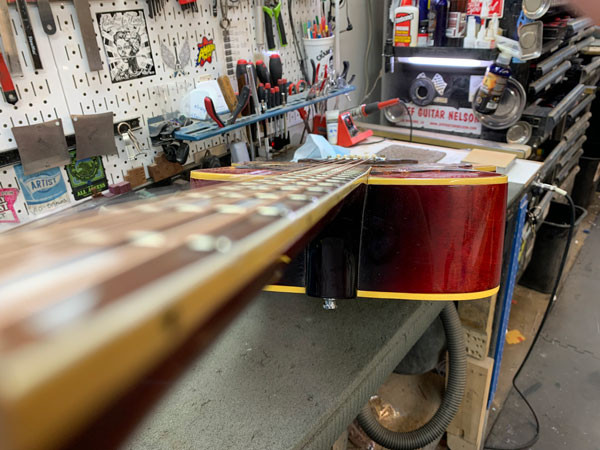 Close-up of the Gibson Dove's bridge and body showing wear and tear
Close-up of the Gibson Dove's bridge and body showing wear and tear
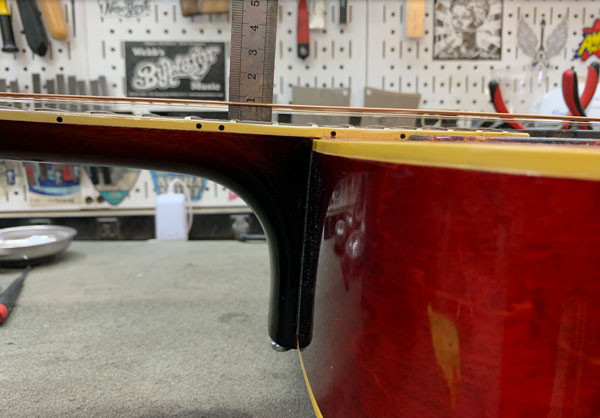 Full view of the Gibson Dove guitar upon arrival, highlighting its overall condition
Full view of the Gibson Dove guitar upon arrival, highlighting its overall condition
Diagnosing Decades of Wear on the Gibson Dove
After fifty years of enduring the constant pressure of guitar strings, the Gibson Dove presented a range of issues. The neck angle was severely misaligned, exhibiting an “underset” condition. Internally, the heel block, a crucial structural component, was collapsing. The Tune-O-Matic bridge, not originally standard on this model but a later modification, was broken. Adding to these problems, the guitar neck itself had developed significant forward relief, bowing under string tension.
While these issues might seem daunting, they are, fortunately, all within the realm of repair. The key was a willingness to carefully disassemble this collectible antique, a task we approached with the utmost respect and expertise. Our goal was not just to make the guitar playable, but to restore its structural integrity and sonic beauty while preserving its vintage character.
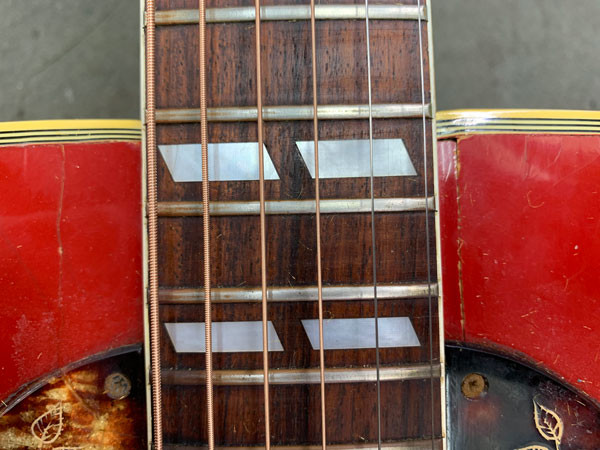 Close-up of the Gibson Dove's neck joint showing the misalignment
Close-up of the Gibson Dove's neck joint showing the misalignment
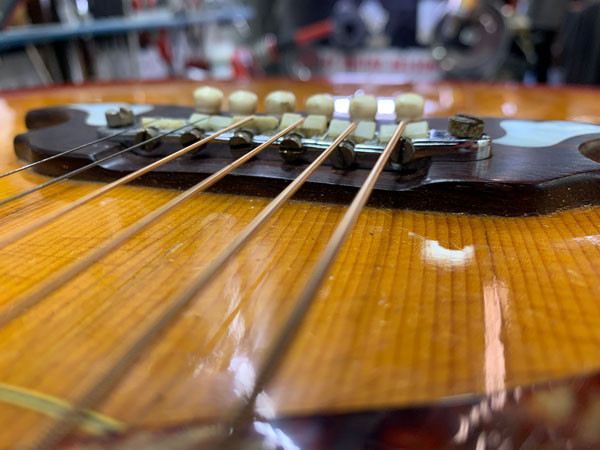 Detailed view of the Gibson Dove's damaged bridge
Detailed view of the Gibson Dove's damaged bridge
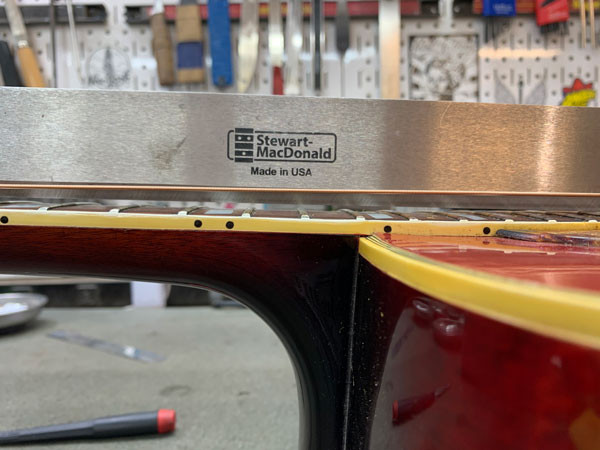 Image showing the Gibson Dove's neck relief
Image showing the Gibson Dove's neck relief
Precision and Preparation: Setting the Stage for Gibson Dove Restoration
Before undertaking any disassembly, especially on a valuable acoustic guitar like this Gibson Dove, meticulous measurements and calculations are essential. Accurately determining the necessary neck angle adjustment is paramount for optimal playability and tone. However, these calculations are dependent on the bridge saddles being in their correct position. Therefore, the first step was to address the broken Tune-O-Matic bridge.
We sourced a new Tune-O-Matic bridge and carefully modified it to replicate the specifications of a factory bridge that would have been contemporary to the Gibson Dove. This attention to detail ensures that the replacement parts are not only functional but also aesthetically and historically appropriate for the instrument.
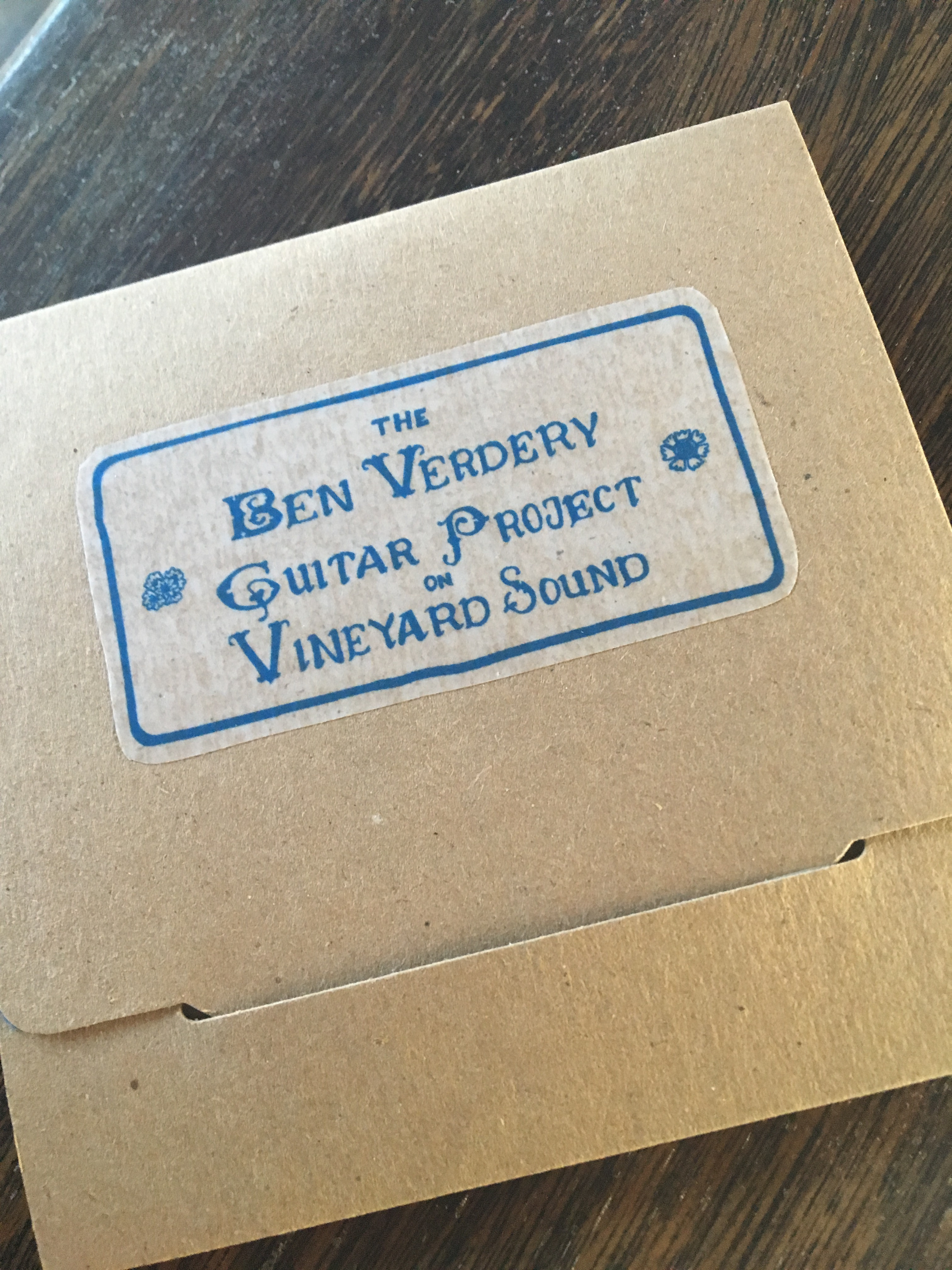 New Tune-o-matic bridge prepared for installation on the Gibson Dove
New Tune-o-matic bridge prepared for installation on the Gibson Dove
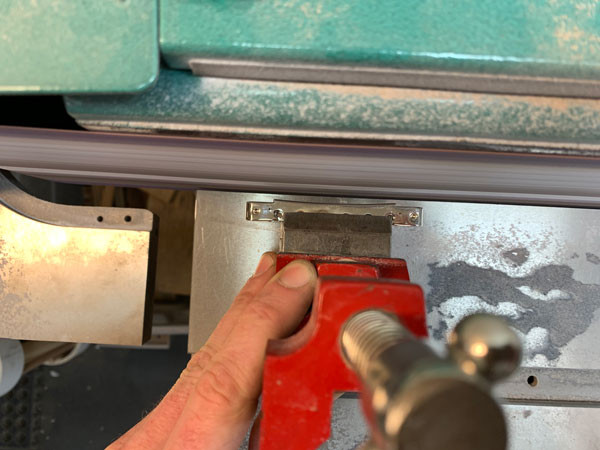 Modified Tune-o-matic bridge being fitted to the Gibson Dove
Modified Tune-o-matic bridge being fitted to the Gibson Dove
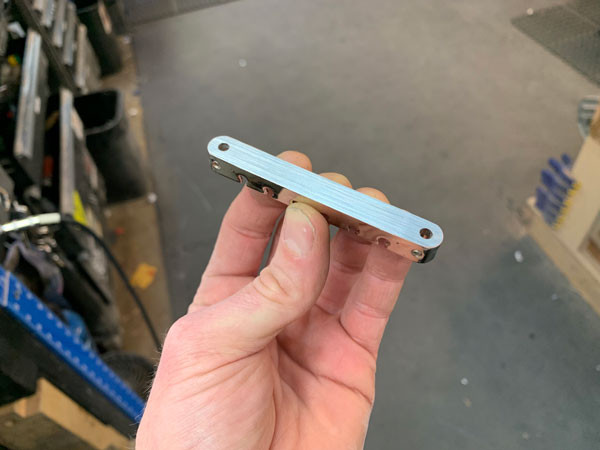 Close-up of the modified bridge on the Gibson Dove
Close-up of the modified bridge on the Gibson Dove
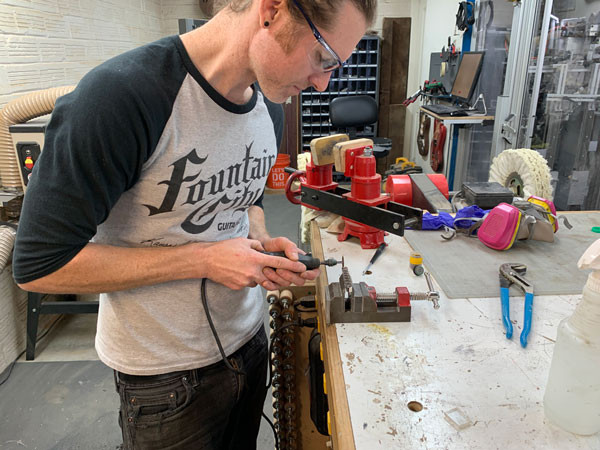 Side view of the bridge alignment on the Gibson Dove
Side view of the bridge alignment on the Gibson Dove
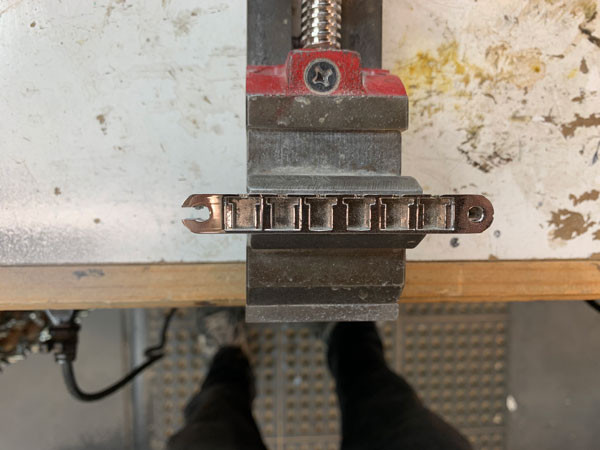 Testing bridge height and string alignment on the Gibson Dove
Testing bridge height and string alignment on the Gibson Dove
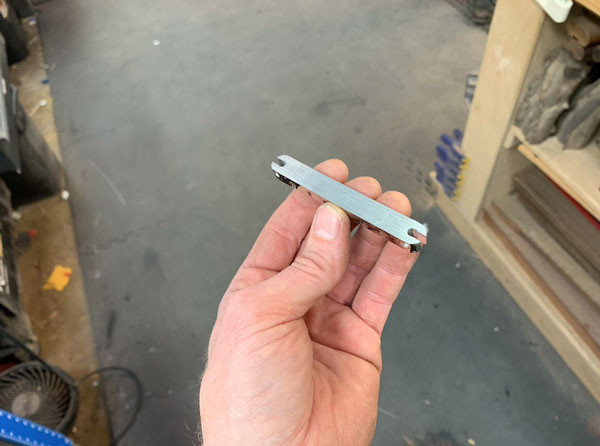 Screen capture showing bridge measurement calculations for the Gibson Dove
Screen capture showing bridge measurement calculations for the Gibson Dove
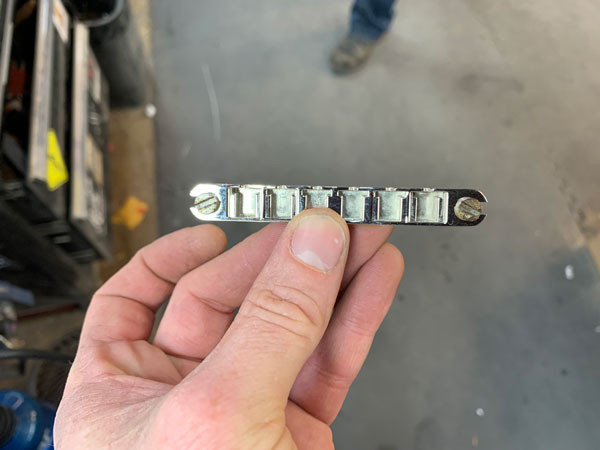 Reused original saddles from the Gibson Dove bridge
Reused original saddles from the Gibson Dove bridge
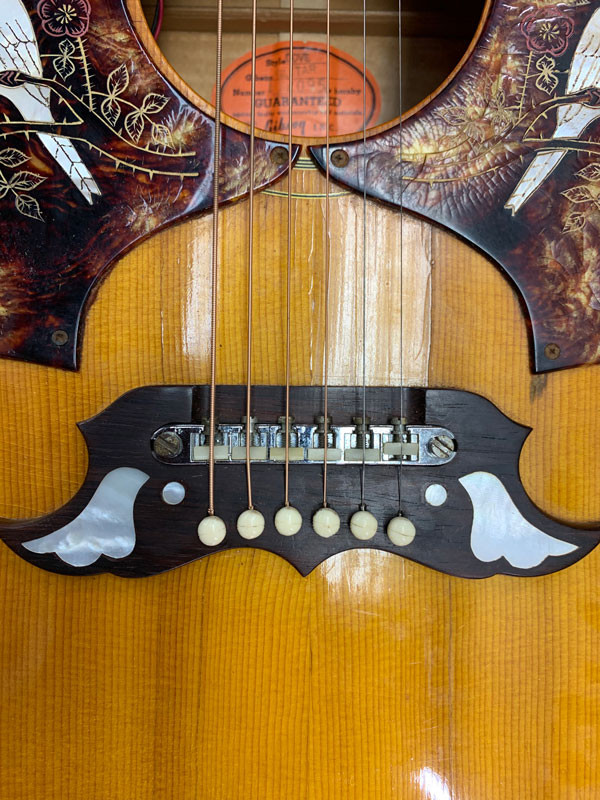 Original saddles being carefully reinstalled on the Gibson Dove
Original saddles being carefully reinstalled on the Gibson Dove
Mike Campbell had expressed a desire to retain the original bridge saddles, a testament to preserving the guitar’s history. We carefully removed and cleaned the original saddles, ensuring they would be reused in the restored bridge. With the bridge properly sorted, we strung the Gibson Dove guitar back to pitch. This allowed us to take precise measurements and finalize the calculations needed for the crucial neck reset procedure. Only then could we begin the delicate process of disassembly.
Resetting the Neck and Rebuilding the Gibson Dove’s Foundation
The neck reset is a critical procedure in acoustic guitar repair, especially for vintage instruments like this Gibson Dove. To remove the neck safely and cleanly, we employed dry heat rather than steam. Dry heat allows us to soften the glue in the neck joint without causing “finish blushing,” a milky discoloration that can occur when moisture penetrates the finish.
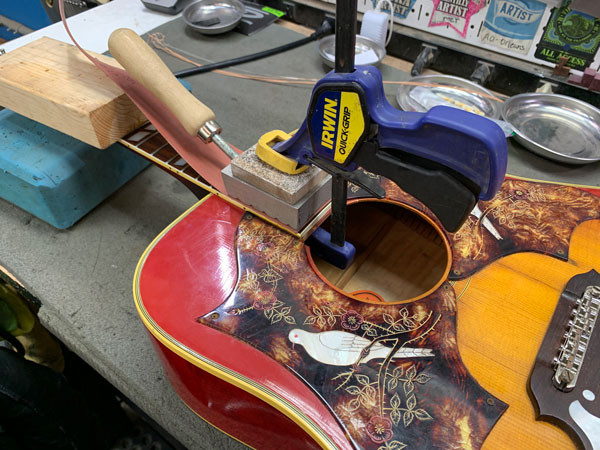 Applying dry heat to the Gibson Dove's neck joint for removal
Applying dry heat to the Gibson Dove's neck joint for removal
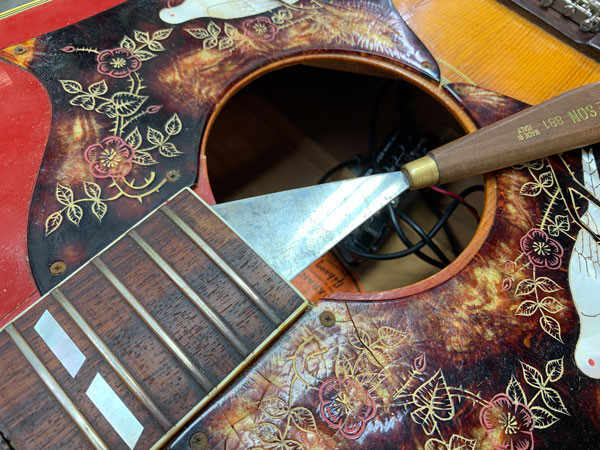 Close-up of the dry heat application process on the Gibson Dove neck
Close-up of the dry heat application process on the Gibson Dove neck
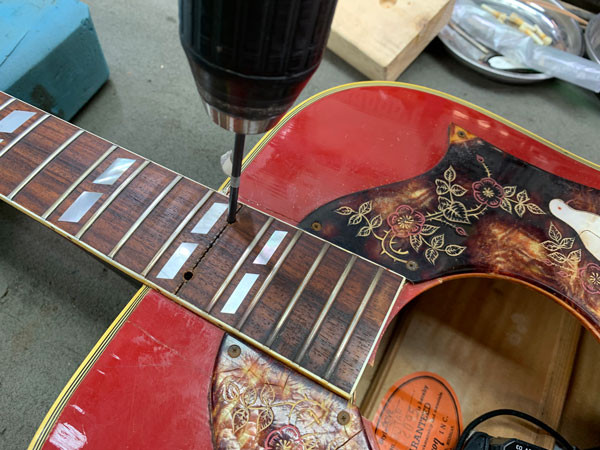 Carefully separating the Gibson Dove's neck from the body
Carefully separating the Gibson Dove's neck from the body
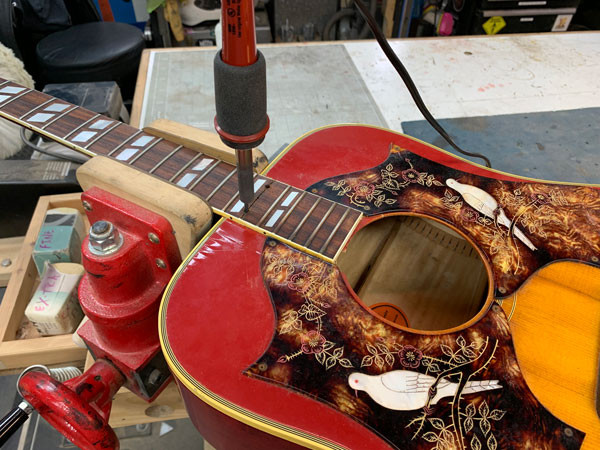 Gibson Dove neck fully removed from the body
Gibson Dove neck fully removed from the body
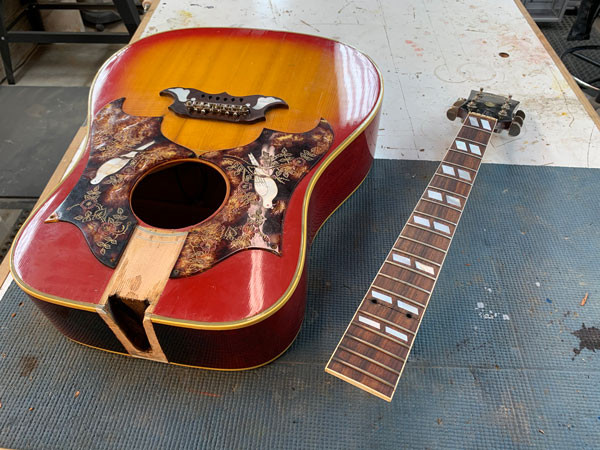 Using specialized tools for neck removal on the Gibson Dove
Using specialized tools for neck removal on the Gibson Dove
While the glue was still pliable, we addressed the collapsed heel block. We carefully reset it to its correct position, ensuring proper structural support. Fresh Titebond wood glue, a luthier’s standard for its strength and reliability, was applied, and the heel block was securely clamped in place. We also took this opportunity to reinforce cracks that had developed in the guitar top over time, using spruce cleats glued to the inside of the body for added stability.
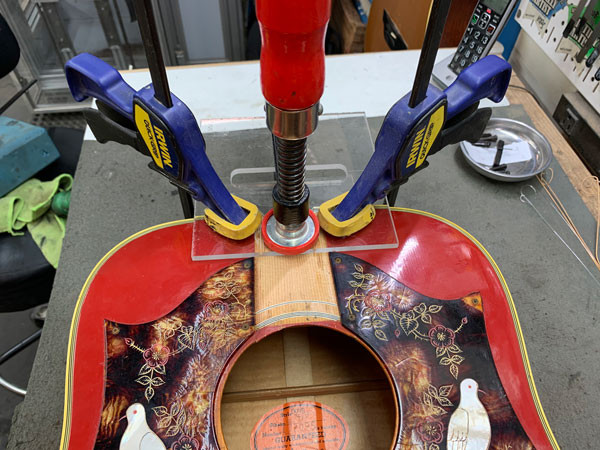 Clamping the reset heel block on the Gibson Dove
Clamping the reset heel block on the Gibson Dove
Significant material needed to be removed from the neck heel to achieve the correct neck angle. This is a precise process that requires a combination of experience and meticulous technique.
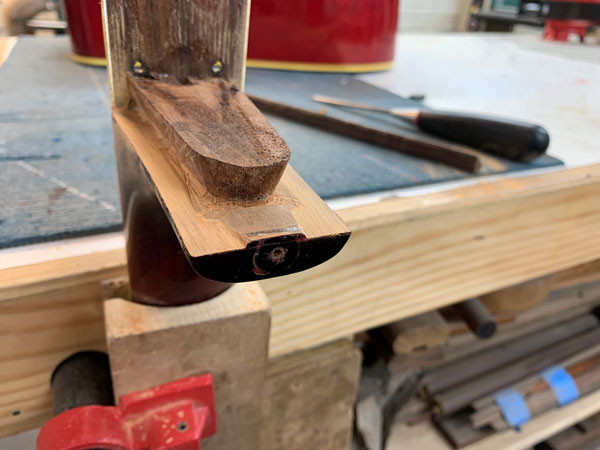 Material removed from the Gibson Dove neck heel for angle adjustment
Material removed from the Gibson Dove neck heel for angle adjustment
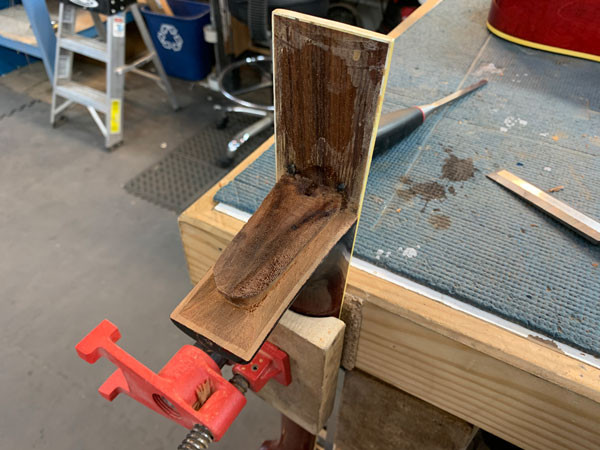 Shaping the neck heel for optimal Gibson Dove neck angle
Shaping the neck heel for optimal Gibson Dove neck angle
We began with chisels and sanding blocks for bulk material removal, then transitioned to a pull-sanding technique for fine-tuning the neck angle and ensuring perfect centerline alignment.
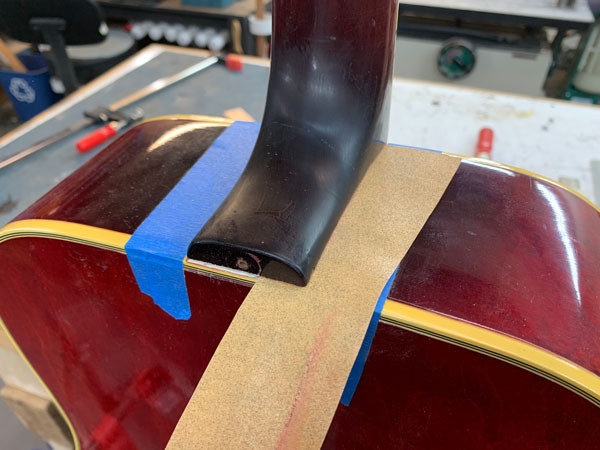 Fine-tuning the neck angle using pull-sanding on the Gibson Dove
Fine-tuning the neck angle using pull-sanding on the Gibson Dove
Once satisfied with the neck angle, we meticulously shimmed and fitted the dovetail joint, ensuring a tight, mechanical fit before applying glue and permanently reattaching the neck.
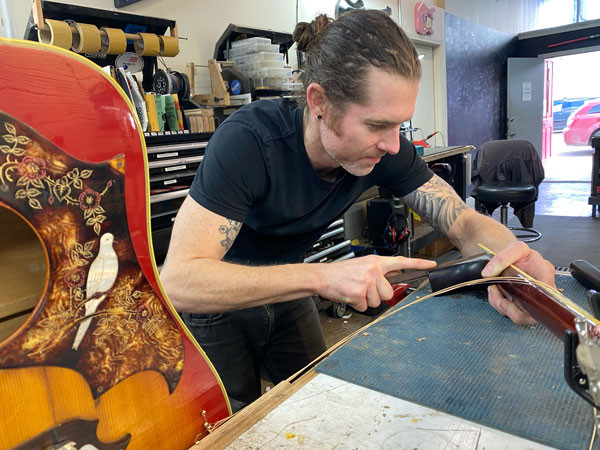 Dry fitting the neck joint on the Gibson Dove before gluing
Dry fitting the neck joint on the Gibson Dove before gluing
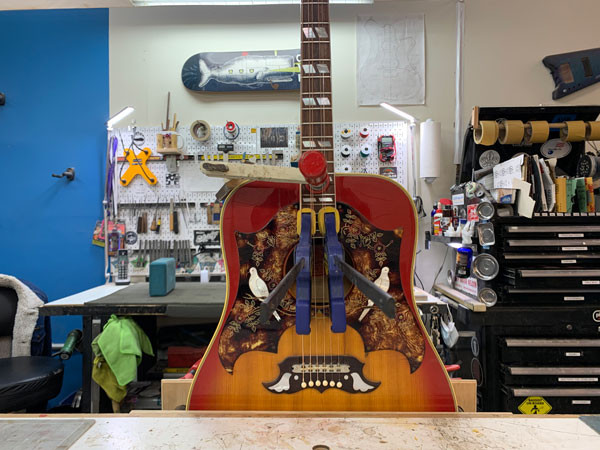 Close-up of the precisely fitted dovetail neck joint of the Gibson Dove
Close-up of the precisely fitted dovetail neck joint of the Gibson Dove
 Gibson Dove neck re-glued and clamped
Gibson Dove neck re-glued and clamped
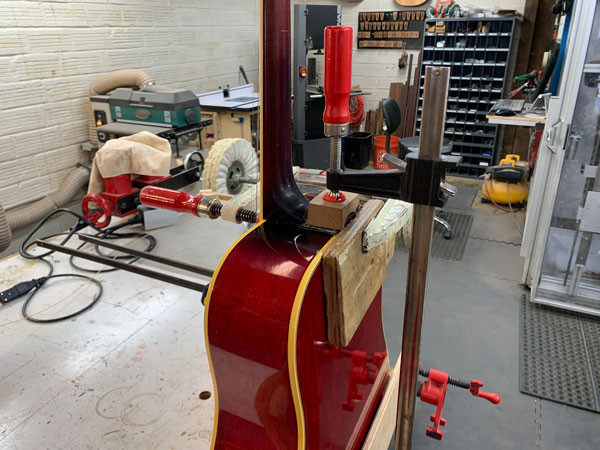 Clamps securing the neck joint during glue drying on the Gibson Dove
Clamps securing the neck joint during glue drying on the Gibson Dove
PLEK Precision and the Rebirth of a Gibson Dove
With the Gibson Dove guitar reassembled and the neck properly set, we assessed the fret condition. We determined that instead of a complete refret, we could preserve the originality of the instrument by using our PLEK machine to level the existing frets. The PLEK is a computerized system that provides unparalleled precision in fret leveling, ensuring optimal playability. The fact that we could also retain the original nut was further good news for maintaining the guitar’s vintage integrity.
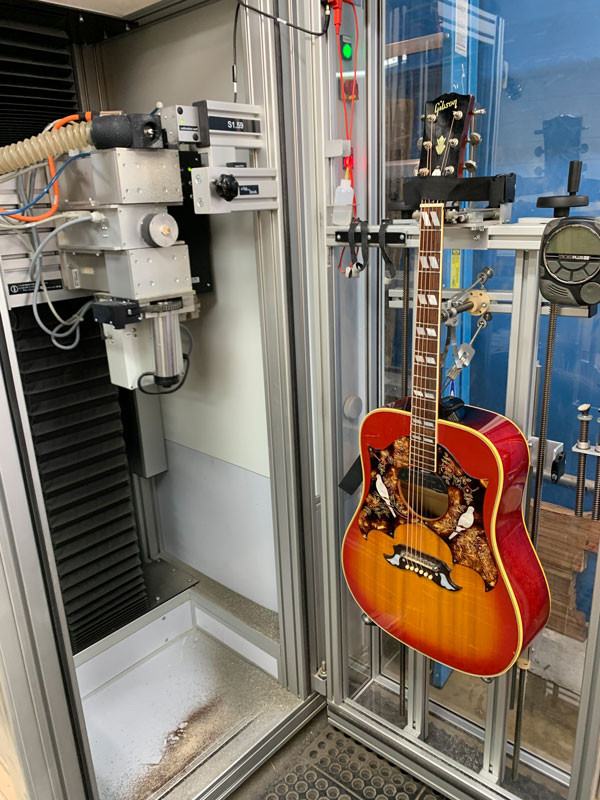 PLEK machine analyzing the Gibson Dove's fretboard
PLEK machine analyzing the Gibson Dove's fretboard
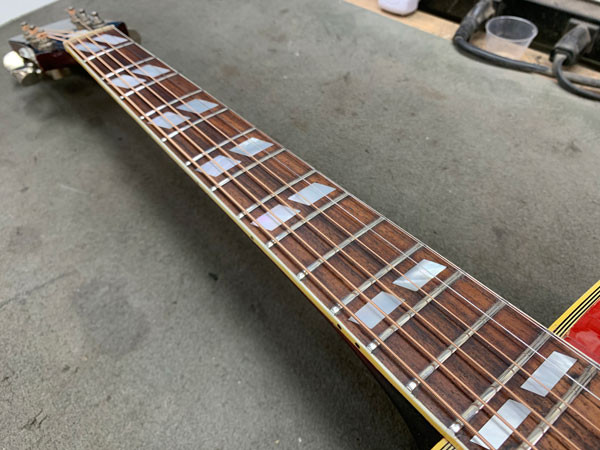 PLEK machine leveling the frets of the Gibson Dove guitar
PLEK machine leveling the frets of the Gibson Dove guitar
The restoration process was complete. The Gibson Dove was carefully polished, and the results were remarkable. The guitar was not only playable again but performing at a level likely exceeding its original factory setup.
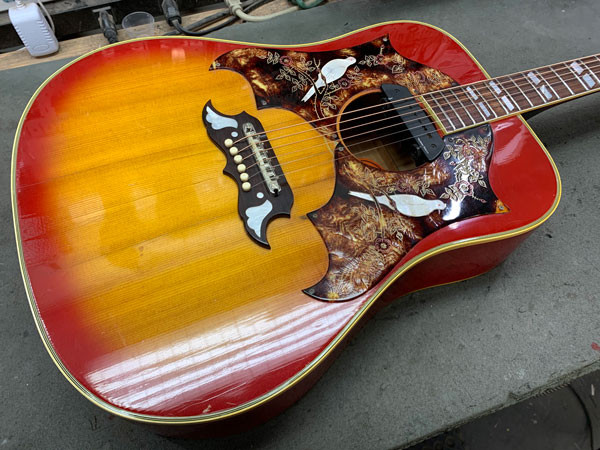 The fully restored and polished 1968 Gibson Dove guitar
The fully restored and polished 1968 Gibson Dove guitar
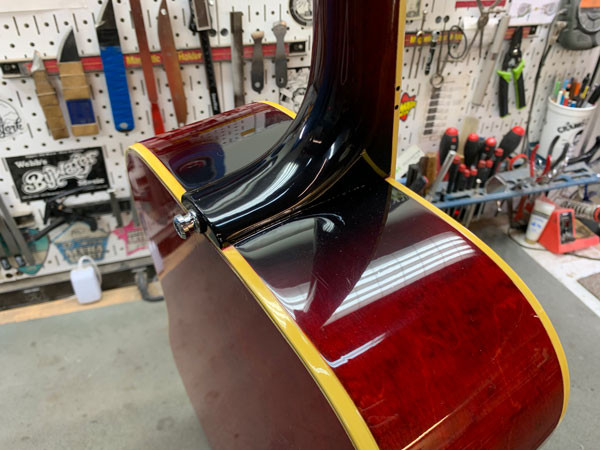 Angled view of the restored Gibson Dove showcasing its finish
Angled view of the restored Gibson Dove showcasing its finish
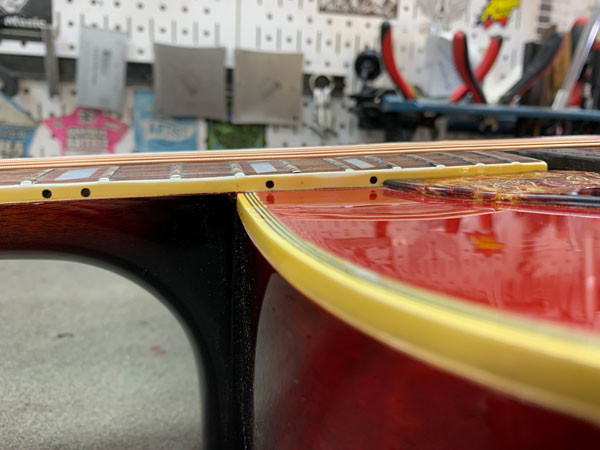 Close-up of the restored Gibson Dove headstock and neck
Close-up of the restored Gibson Dove headstock and neck
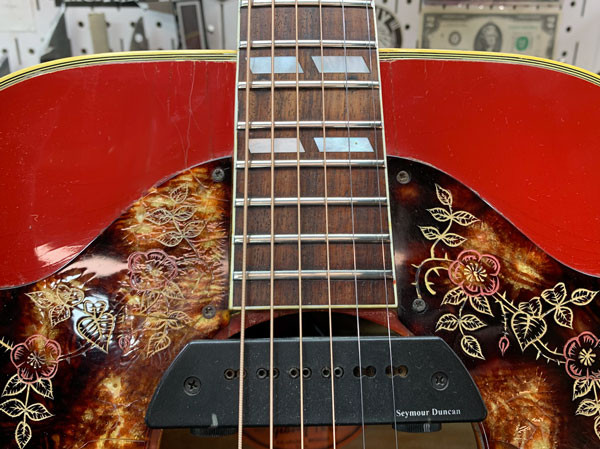 Screen capture of the PLEK analysis results for the Gibson Dove
Screen capture of the PLEK analysis results for the Gibson Dove
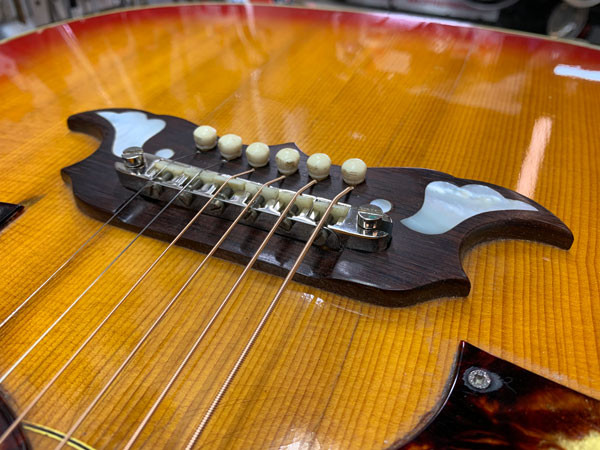 Detail of the restored Gibson Dove body and pickguards
Detail of the restored Gibson Dove body and pickguards
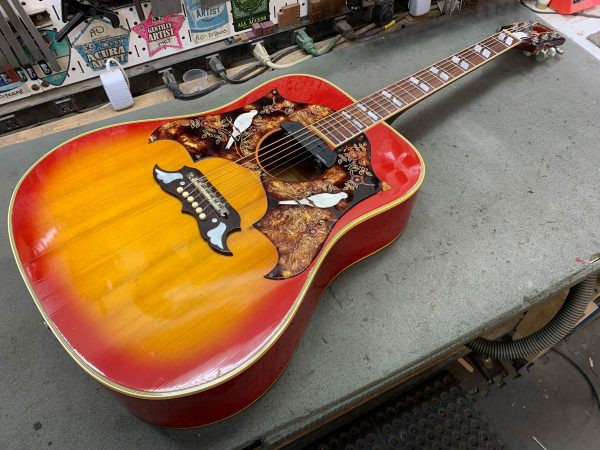 Final shot of the revitalized 1968 Gibson Dove guitar
Final shot of the revitalized 1968 Gibson Dove guitar
A Word from Mike Campbell
And finally, the best testament to our work comes directly from the owner of this magnificent instrument:
“Thanks to Strange Guitarworks in New Orleans for making my vintage Gibson Dove play and sound so much better! It’s purrfect.” – Mike Campbell
Thank you, Mike! The team at Strange Guitarworks is always ready to welcome you back anytime. Whether you are a local musician or a legendary guitarist from afar, we are committed to providing the highest level of guitar care and restoration services. Contact us today to discuss how we can help bring your instrument to its full potential.

